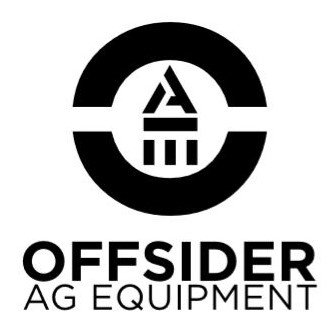How to choose the right grid for the job
Unless you are building a brand new housing development, from a green field, the requirements for your grid will be as individual as your situation.
When you call Offsider Ag to enquire about buying a grid, Dave will ask you questions about what you want your grid to do, rather than just telling you the price.
We want to make sure that you get a product that fits, not just one that we have in stock.
So, how do you know what you need?
The main purpose of the grid is to provide a physical and optical barrier to stock and people. By spacing the top rails just right, light floods into the base of the grid. The animal perceives the grid depth, creating uncertainty or fear which prevents them from making a crossing. Generally, grids replace an exisitng gate or crossing.
When you are choosing you have to consider:
Grid Width
The width (perpendicular to flow of traffic) of a grid is determined by several factors.
Speed - The faster vehicles cross a grid the wider it needs to be to ensure safety.
Traffic Volumes – If there are limited instances of vehicles passing on the grid it is able to be narrower. If regular 2-way traffic is expected the grid needs to be wide enough to safely handle this.
Proximity to corners and intersections - If the grid is installed at a property enterance or close to sharp corners large vehicles may not be able to drive straight across the grid. This results in the need for a wider grid.
Grid Span
The larger the span the harder it is for stock to jump across the grid.
In rural (on farm) applications grids are typically 2m span. When grids are placed at property boundaries or places where the consequence of stock crossing a grid is higher a larger span up to 3m is used. Contrasting colours and keeping the area under the grid free of soil and plants also helps reduce the chance of stock attempting to cross a grid.
Loading Requirements
If you want a grid for your house yard, or to get to your car shed, the load will be different to if you need a grid for your cattle yard paddock.
We manufacture a range of grids to suit different loading applications from 6 to 16 ton per axle and have made grids up to 25 ton per axle for special applications.
Abutment Type
The grid steelwork sits on an abutment to gain height and create the effect that stops stock crossing them. This can be achieved in 3 typical ways.
Concrete – Precast concrete abutments are a quality long term option. They provide an excellent platform to place the grid and minimise the risk of corrosion. They can pose challenges handling them due to the weight and thus machine required to lift them. They can be an expensive option, but are a longer term choice.
Steel – Steel abutments are very commonly used in rural applications. The utilisation of zinc coated steel provides corrosion protection. The design is thus that the abutments are attached to the grid and are installed as a single unit. This significantly reduces install costs.
Logs – This is the lowest cost but most labour intensive option for installing the grid. It is typically used for on farm grids in areas where suitable timber is localy available.
Grid Wings
These are installed on the sides of the grid to stop stock traveling down a fence line from being able to run directly into the grid. Additionally they assist drivers in lining up over the grid when narrower grids are used or its close to a corner. All our wings are removable and bolt into place to minimise movement and noise.
Gates
Gates over the grid can be installed either as stand alone gates or attached to the wings. They are used in applications when access is to be restricted or when grids are installed in high stock pressure areas like near yards or in laneway
Get the right type of help
Why not trust the experts? Dave knows his stuff, has bought and installed grids for farming and in large industrial situations, as well as in our own house yard.
As a civil engineer, Dave is bound by a code of ethics that ensures he will recommend a safe, functional grid for you, even if it isn’t one of ours.
Call Dave on 0427 156 641 to see how he can help.
